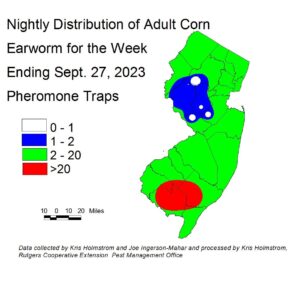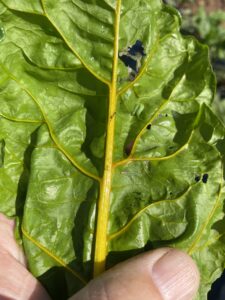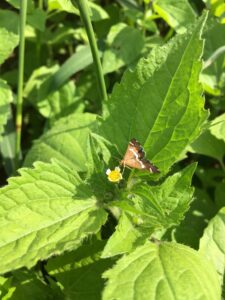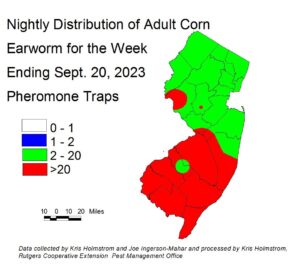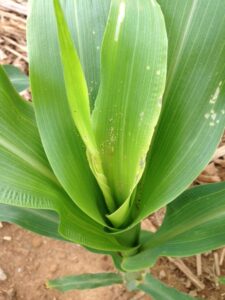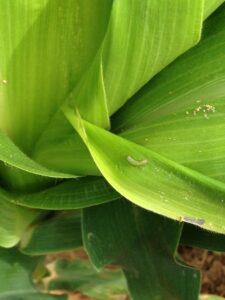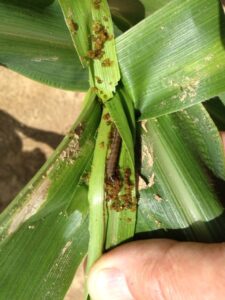Notes:
This edition of the Vegetable IPM Update will be the last regular one of the season. Should a pest situation arise that is important to the grower community, special posts will appear in the Plant and Pest Advisory.
Thank you and good luck to Dr. Joseph Ingerson-Mahar!
Joe has retired after nearly 35 years of service to Rutgers Integrated Pest Management, both in field and vegetable crops. In 1987, after receiving his B.S. and M.S. degrees at Michigan State University, and serving as a private crop consultant in Michigan, Joe came to Rutgers. Aside from receiving his PhD here and supervising field crops and vegetable IPM program activities, Joe taught many entomology classes for undergraduate students and has been heavily involved with various Master Gardener programs. His identification of the primary sources of pepper weevil infestations in southern New Jersey is high among his helpful accomplishments on behalf of growers in our state. We thank him and wish him the very best in this next phase!
Sweet Corn
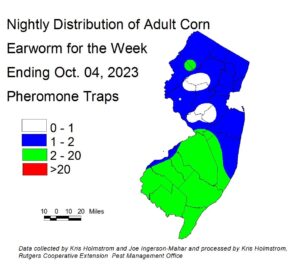 Northern and central blacklight traps and all pheromone traps continue to catch corn earworm (CEW) moths, but numbers continue to fall. Pheromone trap information is available from all northern and central sites, with now very limited input from southern New Jersey. We will use a combination of pheromone and blacklight trap types to derive silk spray schedules by region. We are now only able to check many traps on a weekly basis, as our student help has returned to their studies. This can give some areas an artificially high or low appearance of activity. Green areas on the map (at right) indicate a 4 day schedule. Any remaining silking corn is at limited risk of CEW infestation at this time.
Northern and central blacklight traps and all pheromone traps continue to catch corn earworm (CEW) moths, but numbers continue to fall. Pheromone trap information is available from all northern and central sites, with now very limited input from southern New Jersey. We will use a combination of pheromone and blacklight trap types to derive silk spray schedules by region. We are now only able to check many traps on a weekly basis, as our student help has returned to their studies. This can give some areas an artificially high or low appearance of activity. Green areas on the map (at right) indicate a 4 day schedule. Any remaining silking corn is at limited risk of CEW infestation at this time.
No blacklight trap catches of CEW for the week ending 10/04/23 are above 1/night, with many having gone all week with no CEW.
The highest nightly pheromone trap catches of CEW for the week ending 10/04/23 are as follows:
| Green Creek 6 | South Branch 3 | Snyder Farm (Hunterdon) 2 |
| Georgetown 4 | Califon 2 | Chester 1 |
| Allamuchy 3 | Farmingdale 2 | Dayton 1 |
| East Vineland 3 | Matawan 2 | Pennington 1 |
Silking Spray Schedules*:
South – 4 days
Central – 4 -5 days
North – 4-5 days
*These recommendations are based on regional catches. Adhere to tighter spray schedules if indicated by local trap catches. Synthetic pyrethroids alone should NOT be used for corn earworm (CEW) protection on silking corn, or for fall armyworm (FAW) management at any stage. Control with these materials is very inconsistent.
Cole Crops
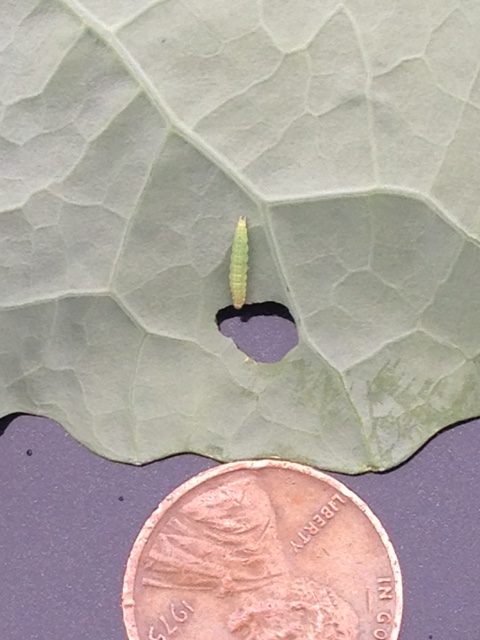 Fall plantings are now impacted by diamondback moth larvae ((DBM) see photo at right), as well as imported cabbage worm (ICW), cross striped cabbage worm (CSCW) and beet armyworm (BAW). DBM can multiply quickly, and does not respond to chlorantraniliprole (Coragen) in many parts of the state. Effective materials continue to be IRAC 5 materials (spinosyns), and the IRAC 6 material, ememectin benzoate (Proclaim). Consultants and scouts report good efficacy with the IRAC 21A, tolfenpyrad (Torac) . Be sure to check the Cole Crops Section of the 2022-23 Commercial Guide for specifics, as PHI’s and crop labels vary. It is important to return to treated fields within 2-3 days to assess the efficacy of the insecticide applications. Effective materials should eliminate DBM larvae within 48 hours. BAW will not be controlled by pyrethroids. ICW and CSCW have not shown resistance to labeled materials in our area.
Fall plantings are now impacted by diamondback moth larvae ((DBM) see photo at right), as well as imported cabbage worm (ICW), cross striped cabbage worm (CSCW) and beet armyworm (BAW). DBM can multiply quickly, and does not respond to chlorantraniliprole (Coragen) in many parts of the state. Effective materials continue to be IRAC 5 materials (spinosyns), and the IRAC 6 material, ememectin benzoate (Proclaim). Consultants and scouts report good efficacy with the IRAC 21A, tolfenpyrad (Torac) . Be sure to check the Cole Crops Section of the 2022-23 Commercial Guide for specifics, as PHI’s and crop labels vary. It is important to return to treated fields within 2-3 days to assess the efficacy of the insecticide applications. Effective materials should eliminate DBM larvae within 48 hours. BAW will not be controlled by pyrethroids. ICW and CSCW have not shown resistance to labeled materials in our area.
Pepper Weevil
Pepper weevil infestations appear to be down for NJ growers this year. As of this writing, only two farms are, or have been infested, both in the Vineland – East Vineland area. Given the time of year and cooling weather, pepper weevil will become less of a problem. Continue to look for small, aborted fruit, cutting them open to examine the interior for feeding damage or small grey-white grubs. Vydate (IRAC 1A) appears to be one of the better materials for trying to manage weevils, along with Actara (IRAC 4A). Never rely upon pyrethroids alone to manage weevils.
Beet Armyworm
Pheromone catches of beet armyworm have declined in southern NJ traps at this time. 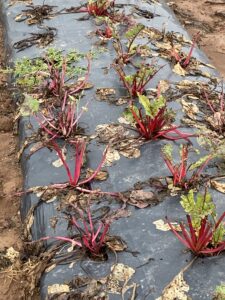
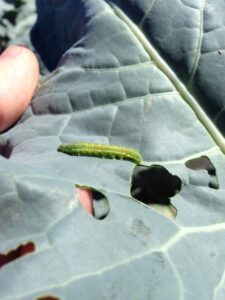 However, BAW larvae continue to appear in cole crop plantings in scouted cole crop plantings in central and northern counties. While numbers are not high in these areas, their presence points to possible higher infestations in southern parts of the state. This pest (photo at near left) has the ability to defoliate pepper plants and damage fruit, and can cause severe damage on other crops (see photo of chard at far left). BAW is resistant to pyrethroid insecticides, and other materials should be used in response to infestations. Effective materials include spinosyns (IRAC 5) and diamides (IRAC 28).
However, BAW larvae continue to appear in cole crop plantings in scouted cole crop plantings in central and northern counties. While numbers are not high in these areas, their presence points to possible higher infestations in southern parts of the state. This pest (photo at near left) has the ability to defoliate pepper plants and damage fruit, and can cause severe damage on other crops (see photo of chard at far left). BAW is resistant to pyrethroid insecticides, and other materials should be used in response to infestations. Effective materials include spinosyns (IRAC 5) and diamides (IRAC 28).
